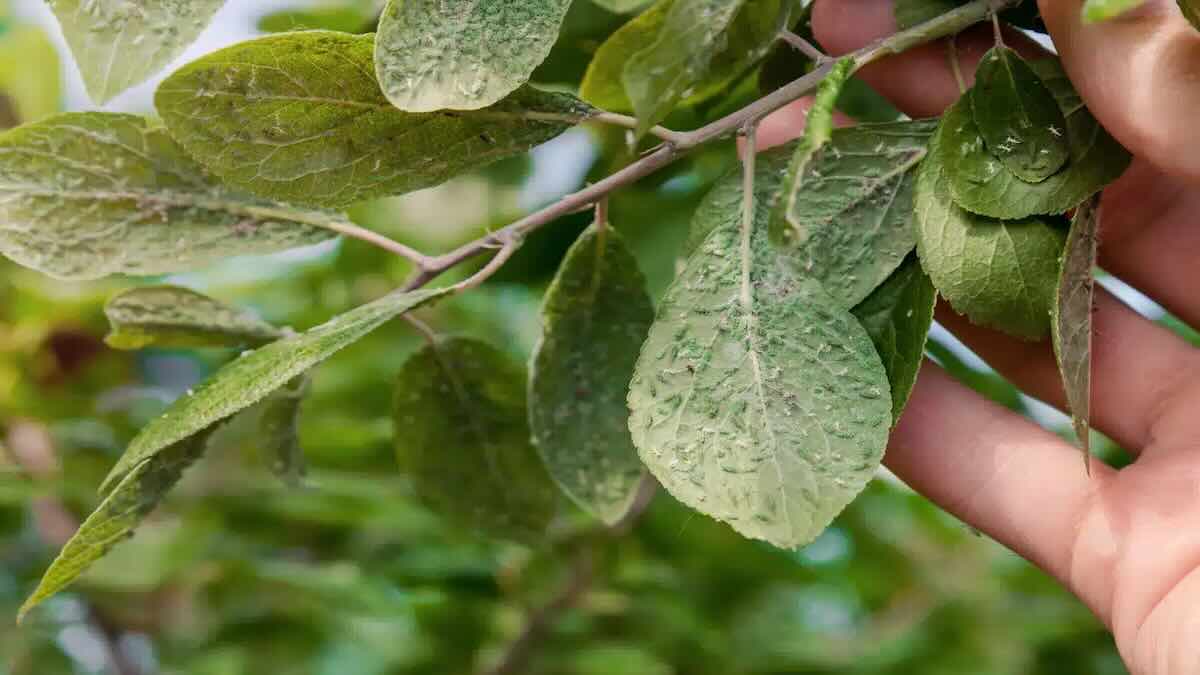Aphids are easy to control without harsh chemicals: a mild dish-soap spray clears infestations and helps your plants bounce back fast. Mix 1–2 teaspoons of gentle dish soap per quart of water in a spray bottle, shake, then coat leaves—tops and undersides—every 2–3 days for a week. This breaks the pests’ hold, limits disease spread, and reduces the black sooty mold that follows them. Applied in the cool of morning or evening, the method is effective, inexpensive, and garden-friendly.
Aphids in context: why the problem keeps growing
Aphids are tiny sap-feeders that tap into stems and leaves, draining vigor and slowing growth. They also excrete a sticky residue called honeydew. That residue invites ants and encourages sooty mold, which darkens foliage and lowers photosynthesis. About 80% of gardeners face aphids each year, so the issue is widespread.
Recent seasons in the US have seen more frequent outbreaks. Warmer winters allow overwintering populations to survive and resume earlier, so beds can be hit sooner in spring. The result is curled foliage, fewer blossoms and fruit, and higher disease pressure if nothing is done.
Sooty mold and honeydew explained
When honeydew coats foliage, airborne fungal spores settle and build the black, velvety film known as sooty mold. The fungus feeds on sugars in the honeydew rather than the leaf itself, so it rarely kills plants outright; the trouble is shading—light is blocked, photosynthesis drops, and already stressed shoots lose vigor.
The sticky coating also attracts other insects that forage on the sugars and can help aphid colonies persist, prolonging damage. Remove the honeydew’s source and the cycle breaks: once aphids are controlled, the film dries, weathers away with rain, or can be gently rinsed off to restore a clear canopy.
Why a dish-soap spray protects plants quickly
Dish soap changes water’s surface tension. The fine film smothers soft-bodied pests on contact, helping stop damage and the spread of plant diseases those insects can carry. Because the solution is dilute and applied as a mist, it’s gentle on most ornamentals and edibles when used correctly. Compared with many commercial pesticides, this approach is simpler to mix, budget-friendly, and available in any kitchen. You may need to re-apply more frequently than with store-bought products, but the trade-off is a low-tox routine that fits everyday care.
Timing and application that make the difference
Spray in early morning or late evening, when pollinators are less active and sun is softer. Thorough coverage is key: aphids shelter on undersides of leaves, along tender shoots, and in tight clusters. For sensitive foliage, start with a weaker solution and watch for leaf spotting before moving to a standard mix.
Quick comparison for practical choices
• Toxicity: dish-soap spray is non-toxic in normal use; many pesticides list hazard warnings.
• Cost: a few drops per quart keeps costs low; commercial products vary widely.
• Availability: both are easy to find; the homemade option is immediate.
Results you can see and mistakes to avoid
Handled early, infestations decline fast. Leaves uncurl as new growth emerges, and the sooty film fades as rainfall and rinsing remove it once honeydew stops. Because the solution acts on contact, consistency matters: repeat every 2–3 days for a week to catch newly arrived pests. Avoid heavy midday sprays that evaporate quickly.
Don’t forget hidden spots; incomplete coverage leaves pockets that rebound. For delicate greenery, always start mild and observe. And remember, this is a targeted fix for aphids; protecting overall garden health still relies on clean tools, good airflow, and regular checks.
Pre-spray checklist for smoother sessions
- Mix 1–2 teaspoons of mild dish soap per quart of water and shake well.
- Test on a small leaf, wait 24 hours, then proceed if no spotting appears.
- Spray tops and undersides of leaves until lightly coated, not dripping.
- Reapply every 2–3 days for a week, then monitor weekly.
- Rinse foliage with plain water after the final treatment if residue remains.
Trends, seasons, and what to expect next
In recent years, aphid pressure across US gardens has climbed, with warmer winters allowing populations to persist and flare earlier in the season. That means vigilance matters even in late winter and early spring. The dish-soap approach remains a smart first response: fast to deploy, safe for most beds, and flexible enough for repeated use. Commercial pesticides can still clear heavy outbreaks, but they add cost and toxicity considerations. By choosing a kitchen-cabinet fix first, you reduce exposure, keep costs down, and respond quickly the moment clusters appear on tender shoots. Stay consistent for one full week, then shift to watchful maintenance and spot treatments when needed.
Keep your garden calm and balanced
A mild dish-soap spray gives home gardeners a reliable way to break aphid cycles without complicating care. Mix, test, and coat foliage thoroughly; repeat every few days for one week; then monitor and spot-treat as needed. You’ll protect your beds, limit disease, and keep maintenance simple. If populations surge again after a warm spell, restart the cycle promptly—speed and coverage are your best allies.
